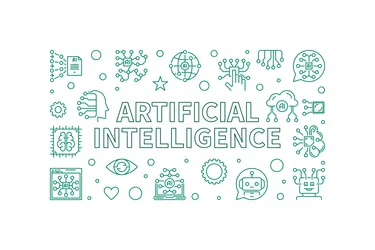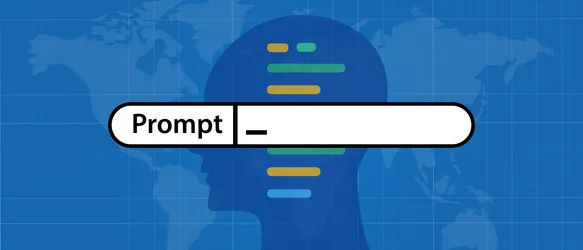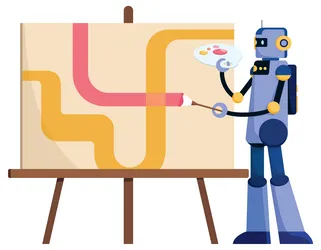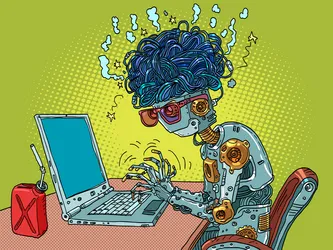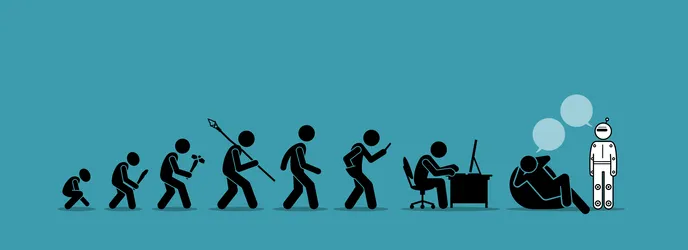Most of you are aware of what artificial intelligence (AI) is capable of, but artificial general intelligence (AGI) is the next step up in machine learning (ML). Neither technology is new per sae. Both were conceived in the 1950s and 1960s. The experts who could forecast the capabilities of AI and ML envisioned what it might look like now and they were not far off their mark. Mathematicians and computer scientists foresaw AI becoming comparable to the human brain, and one day in our not-too-distant future their dream may become a reality.
Let me provide you with a brief overview of both AI and AGI and then dive in with what you need to understand about AGI is different. AI can solve specific problems or perform certain tasks. AI uses ML (using and developing computer systems that can learn and adapt without being given instructions by using algorithms and statistical models to arrive at responses and patterns in data), natural language processing (NLP – computer programs that respond to written or spoken language and translate those replies into verbal or written replies in any language given), reinforcement learning (machine learning method that learns via trial and error), and sometimes deep learning (a subset of machine learning using a neural network of three or more layers) to arrive at its solutions. However, the combination of these does not quite replicate the computing capacity of our human brain.
AI is being used already in the areas of customer service as chatbots; search engines like Google, Netflix, and Spotify; voice assistants like Alexia and Siri; and image and facial recognition apps on our cell phones or elsewhere. That is also called narrow artificial intelligence and it can act quite similar to its human counterpart in some areas, but not in all.
Artificial general intelligence (AGI) in every form is not yet available to mainstream people around the globe, but it is only a matter of time. It is, however, being implemented in some things we may see in our day-to-day lives. For example, self-driving cars are comprised of artificial general intelligence in that they are able to discern other vehicles from people or other objects and adhere to the rules of the road. When you think about that it is fairly complex.
There are already commercial applications of AGI available. Ross Intelligence has what they call the AI Attorney. It is basically an AGI legal expert that is able to mine for data and siphon through a billion pages of documents analyzing the information contained therein and providing exact replies to questions in fewer than three seconds. That is impressive.
AlphaGo is another AGI application. It is a narrow version of AGI because it is only trained on the computer game GO. GO is generally considered to be a fairly complex game and AlphaGo beat the reigning human champion in a five-game match in 2016.
OpenAi’s ChatGPT-4/4 can replicate human language and intelligence in their responses to queries. For instance, they can draw diagrams, solve equations, predict the next work in a sentence, pass BAR exams, create code, and summarize lengthy text. They are a good application of what AGI is capable of now and going forward. However, they do occasionally present flawed or nonsensical responses. Over time I am sure the bugs will get worked out and we will see a more efficient and effective set of responses to questions heralded.
Watson by IBM is a supercomputer and can do what almost no other computer can. Watson touts immense computing power that translates cumbersome engineering projects into seemingly easy tasks and is able to effectively comprehend previously unsolvable science problems with ease. Over time Watson may be able to figure out the ultimate in complex issues like the birth of our universe via remodeling the Big Bang Theory.
The question on everyone’s lips is whether AI or AGI will one day replace human beings. Stephen Hawking, Theoretical Physicist, said in 2014 “The development of full artificial intelligence could spell the end of the human race.” To which he added, “It would take off on its own and redesign itself at an ever-increasing rate. Humans, who are limited by slow biological evolution, couldn’t compete and would be superseded.”
So, do we quake in fear or eagerly wait to see what is coming? Ray Kurzweil, inventor, and futurist, said in 2017 that computers will be on par with humans by 2029 at the rate things are currently progressing. In order to truly get there we may need to use neuromorphic computing. That level of computing replicates the functioning of the human brain by using artificial neurons and synapses. The other way is using neural networks. These are a mix of neural networks and rule-based applications. When we reach that point it is termed artificial superintelligence and it is a stand-alone. AI and AGI are running in that direction at warp speeds.
What Hawking and Kurzweil spoke about may already be at our doorstep. Are we ready?
Graphics courtesy of:
https://www.vectorstock.com/royalty-free-vectors/artificial-general-intelligence-vectors
Resources:
https://www.techtarget.com/searchenterpriseai/definition/artificial-general-intelligence- AGI
https://www.wired.com/story/what-is-artificial-general-intelligence-agi-explained/
https://www.techtarget.com/searchenterpriseai/tip/4-main-types-of-AI-explained

